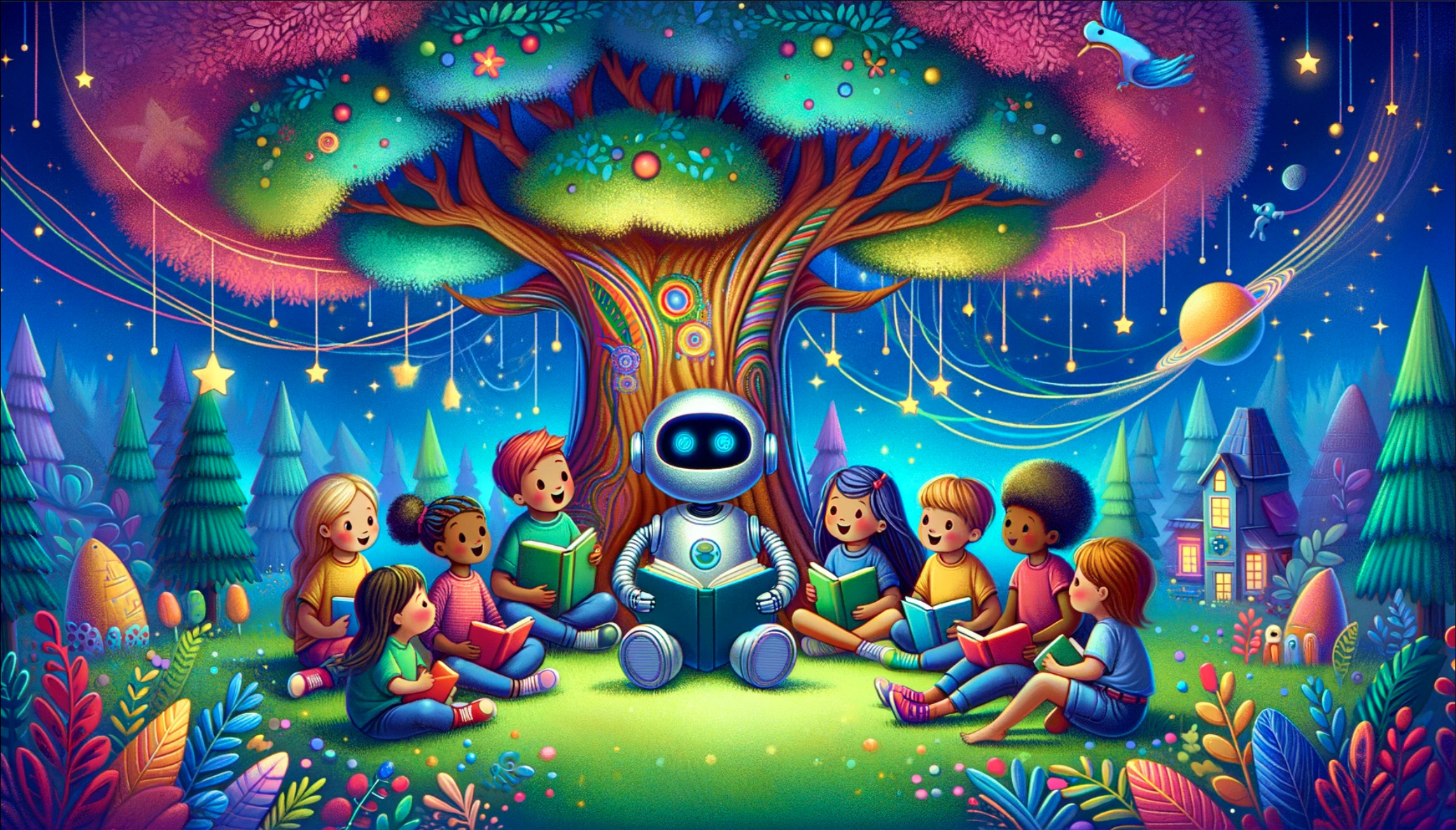
The art of storytelling is undergoing a fascinating transformation. Particularly in the realm of children’s literature, ChatGPT comes through as a groundbreaking tool, introducing a new dimension to kids’ storytelling.
I’ve seen firsthand how ChatGPT can revolutionize the way stories are created, told, and experienced by young minds.
The Evolution of Storytelling in the Digital Age
Storytelling has always been a fundamental part of human culture. From the ancient tradition of oral tales to the modern world of e-books and audiobooks, the way stories are conveyed has continually evolved.
Now, AI-powered tools like ChatGPT are setting the stage for a new era in children’s literature.
What is ChatGPT?
ChatGPT is an advanced language model developed by OpenAI, designed to understand and generate human-like text based on given prompts. Its ability to process and create language in a conversational manner makes it an excellent tool for generating creative content, including children’s stories.
The Intersection of AI and Children’s Literature
The integration of AI in children’s storytelling is not just about using technology for the sake of novelty. It’s about enhancing the storytelling experience, making it more engaging, interactive, and personalized for young readers. ChatGPT, with its natural language processing capabilities, opens up limitless possibilities in crafting stories that are both educational and entertaining.
The Benefits of Using ChatGPT for Children’s Storytelling
- Enhanced Creativity: ChatGPT can generate a wide range of creative story ideas, characters, and plots, offering fresh perspectives that might not occur to human writers.
- Interactive Storytelling: Children can interact with the story by choosing different story paths or asking questions, making the reading experience more engaging.
- Personalization: Stories can be tailored to a child’s interests, reading level, and cultural background, making the content more relatable and enjoyable.
- Educational Value: ChatGPT can be programmed to include educational themes in stories, such as moral lessons, historical facts, or scientific concepts.
- Language Development: Exposure to well-written stories generated by ChatGPT can aid in language development and comprehension skills in children.
The Role of ChatGPT in Fostering Creativity and Imagination
One of the most exciting aspects of using ChatGPT in children’s literature is its potential to foster creativity and imagination. AI-generated stories can introduce children to a diverse range of characters, settings, and plots, expanding their imagination beyond the conventional.
Moreover, the interactive element of ChatGPT-driven stories encourages children to think creatively, as they can influence the direction of the story.
Crafting Unique Characters and Worlds
With ChatGPT, the scope of creating unique characters and fantastical worlds is limitless. The AI can draw from a massive database of information, combining elements in novel ways to create interesting characters and settings that keep young minds engaged.
Interactive and Collaborative Storytelling
ChatGPT allows for a more interactive form of storytelling. Children can engage in a dialogue with the AI, asking questions, making choices, and even contributing to the story’s development.
This collaborative process not only makes the story more engaging but also enhances the child’s cognitive and decision-making skills.
Overcoming Challenges and Ethical Considerations
While the use of ChatGPT in children’s storytelling offers numerous benefits, it also presents certain challenges and ethical considerations.
Ensuring Age-Appropriate Content
One of the primary concerns is ensuring that the content generated by ChatGPT is age-appropriate and aligns with the values and sensitivities of different cultures. Ongoing supervision and tweaking of the AI’s algorithms are essential to maintain suitable content.
Balancing Technology and Human Touch
Another challenge is finding the right balance between technological innovation and the irreplaceable human touch in storytelling. While ChatGPT can generate stories, the emotional depth, moral nuances, and cultural contexts are areas where human oversight is crucial.
Data Privacy and Security
At a time where data privacy is of utmost importance, especially concerning children, it’s vital to make sure that interactions with ChatGPT are secure and that personal data is protected.
The Future of ChatGPT in Children’s Literature
Looking ahead, the role of ChatGPT in children’s storytelling is bound to grow. We can expect more sophisticated AI models that offer even greater interactivity, personalization, and educational value.
The key to successfully integrating ChatGPT into children’s literature lies in striking a balance between technological capabilities and the timeless art of storytelling.
Embracing Innovation While Honouring Tradition
As we embrace the innovations brought by ChatGPT, it’s also important to honour the traditional elements of storytelling – the human connection, moral lessons, and cultural heritage that have always been at the heart of children’s literature.
Collaborative Efforts Between Writers and AI
The future might see more collaborative efforts where authors use ChatGPT as a tool to enhance their creative process, bringing together the best of AI capabilities and human creativity.
Conclusion
ChatGPT for children’s storytelling is not just a technological advancement; it’s a gateway to a new dimension in kids’ literature. It offers a world where stories are more interactive, imaginative, and personalized, capturing the hearts and minds of young readers like never before.
As we make our way through this exciting landscape, the potential for innovation in children’s storytelling is limitless, promising a future where technology and imagination go hand in hand.





